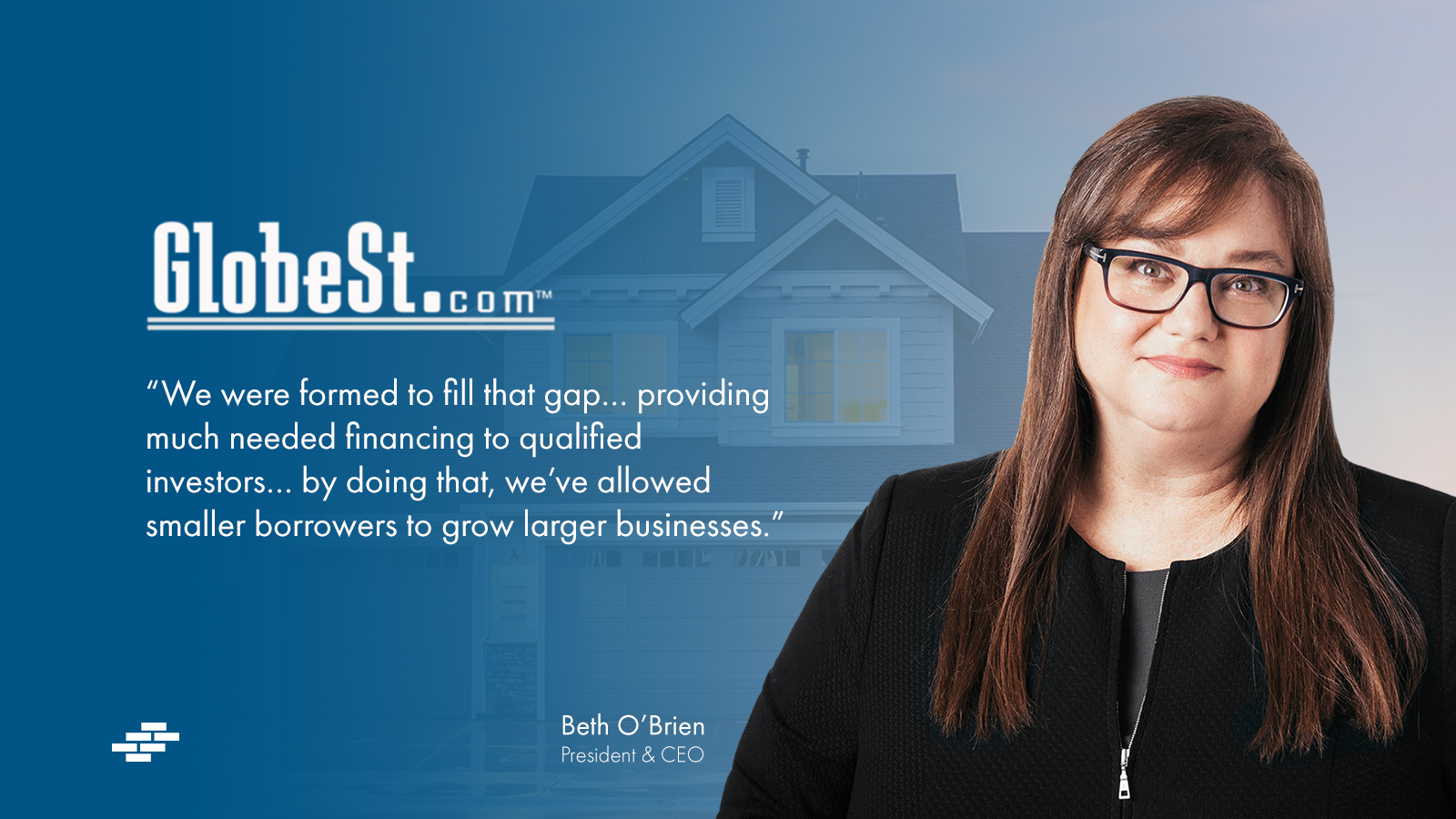
Lender Fills Market Void For Budding Investors
CoreVest is targeting investors growing from single-family home portfolios into small multifamily properties, where there is little competition.
CoreVest is filling a void in the capital markets for budding investors. That is new investors growing portfolios of single-family homes or small multifamily complexes. This class of investors is often caught in a gap between residential lending and commercial lending. CoreVest has stepped up to serve this segment of the market, and it has found ample opportunities. We sat down with CoreVest’s CEO Beth O’Brien to talk about the firm’s lending strategy and the demand from new investors for capital.
GlobeSt.com: Tell me about your lending strategy and the niche market that you serve.
Beth O’Brien: We focus exclusively on residential real estate investors, an underserved market that has struggled historically to find quality debt capital to grow their businesses. We were formed to fill that gap – by providing much needed financing to qualified investors. Our strategy has been to continually evolve and to custom tailor our loan products to serve investors’ goals, even as they emerge. This understanding and responsiveness stems from our own experience participating as investors in the residential real estate market prior to our launch. We saw that there was little to no debt capital available in this niche, especially to the smaller and mid-sized residential real estate investors. As a result, we launched CoreVest and now finance everything from a single fix and flip asset to large pools of long-term rental loans on single-family and multifamily investment property.
GlobeSt.com: Why do you think that other lenders have overlooked this segment of the market?
O’Brien: Quite frankly, residential real estate investing is not a new business. It’s been around for decades. However, only since the financial crisis have we started to see institutional capital enter the market. First it was equity and now it’s debt. CoreVest is really at the forefront of bringing institutional debt capital to the single family rental market. By doing that, we’ve allowed smaller borrowers to grow larger businesses. The products we offer are commercial loans on single-family collateral. A lot of residential lenders do not know how to efficiently underwrite single-family homes as a business and a lot of commercial lenders do not understand the asset type. You could look at it as an extension of either but I think you would miss unique factors. This is why we think of it as neither. It is its own asset class.
GlobeSt.com: What is demand like for the middle-market segment, and where is it heading?
O’Brien: Historically, the single-family rental business was a set of highly fractured, almost accidental landlords—people who moved out of their home and decided to rent it or people with a few rentals on the side. Then some large institutional investors came into the market to take advantage of distressed pricing but those investors only account for 1% to 2% of the entire market. Now, we are seeing the fastest growing segment of the market in the mid-sized professional landlord with 100 to 2000 homes. We think this size landlord, who is generally focused on specific sub-markets, is where the lending growth will take place. They are also running these portfolios as a true business.
GlobeSt.com: What is driving demand in the market, and why is activity so robust?
O’Brien: Generational shifts in home buying and growing rental demographics have all contributed to the increasing interest in residential real estate investing. It is further supported by recent research which show that rental homes continue to gain its share on the total housing stock. In parallel with this growth, the increasing demand for financing is naturally being driven by the rise of the professional landlord who once did not have access to attractive long-term debt capital and now does. We were fortunate to be a pioneer in this market, and as it has evolved, we were also fortunate to be chosen for different partnerships and pilot programs such as the inaugural Freddie Mac single-family rental deal in the space last fall. The deeper involvement by government sponsored entities (GSEs), such as Freddie Mac, has also increased investor demand for debt.
GlobeSt.com: CoreVest launched a few years ago. Tell me about the response that you have gotten from the market, your activity and the volume of deals that you have done.
O’Brien: When we launched, it stemmed from a need in the market and we initially only offered two portfolio products – one for long-term single-family rental loans on stabilized assets and one structured as a line of credit for acquisitions and fix and flip. Fast forward a few years later working with over a thousand investors and financing more than 25,000 properties, we now also provide construction and rehab financing, multifamily bridge and stabilized loans, products that work at auction, and financing for student housing and adult living communities. We have adapted to the needs of our borrowers and have become a lifecycle lender to our clients across the spectrum.
GlobeSt.com: What are your goals this year for the firm, and what is your expectation in terms of deal volume?
O’Brien: Our goal is to continue to grow with our clients. That means finding areas where they don’t have the right debt capital for their needs and filling that void. We have been growing organically every year for the past four years, closing over $3.5 Billion in loans and financing more than 25,000 investment properties, and would expect to continue on that trajectory.
This article originally appeared on GlobeSt.com.
View the full article here.